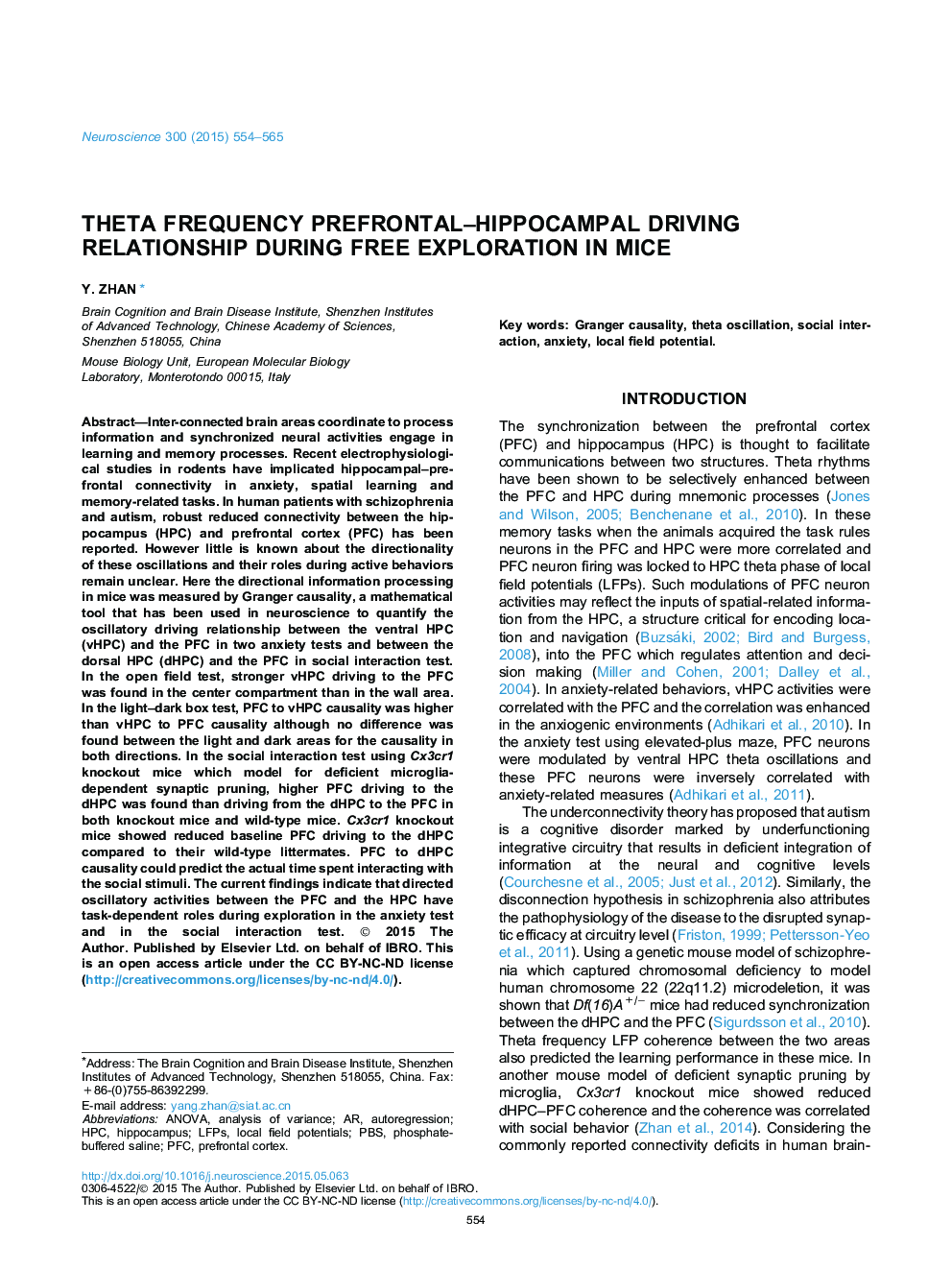| Article ID | Journal | Published Year | Pages | File Type |
|---|---|---|---|---|
| 6271996 | Neuroscience | 2015 | 12 Pages |
â¢vHPC â PFC causality in the center is higher than near the wall in open-field test.â¢vHPC â PFC and PFC â vHPC causality shows no difference between light and dark areas.â¢PFC â dHPC driving is higher than dHPC â PFC driving in social interaction test.â¢Social interaction can be predicted by prefrontal to dorsal hippocampal causality.
Inter-connected brain areas coordinate to process information and synchronized neural activities engage in learning and memory processes. Recent electrophysiological studies in rodents have implicated hippocampal-prefrontal connectivity in anxiety, spatial learning and memory-related tasks. In human patients with schizophrenia and autism, robust reduced connectivity between the hippocampus (HPC) and prefrontal cortex (PFC) has been reported. However little is known about the directionality of these oscillations and their roles during active behaviors remain unclear. Here the directional information processing in mice was measured by Granger causality, a mathematical tool that has been used in neuroscience to quantify the oscillatory driving relationship between the ventral HPC (vHPC) and the PFC in two anxiety tests and between the dorsal HPC (dHPC) and the PFC in social interaction test. In the open field test, stronger vHPC driving to the PFC was found in the center compartment than in the wall area. In the light-dark box test, PFC to vHPC causality was higher than vHPC to PFC causality although no difference was found between the light and dark areas for the causality in both directions. In the social interaction test using Cx3cr1 knockout mice which model for deficient microglia-dependent synaptic pruning, higher PFC driving to the dHPC was found than driving from the dHPC to the PFC in both knockout mice and wild-type mice. Cx3cr1 knockout mice showed reduced baseline PFC driving to the dHPC compared to their wild-type littermates. PFC to dHPC causality could predict the actual time spent interacting with the social stimuli. The current findings indicate that directed oscillatory activities between the PFC and the HPC have task-dependent roles during exploration in the anxiety test and in the social interaction test.
